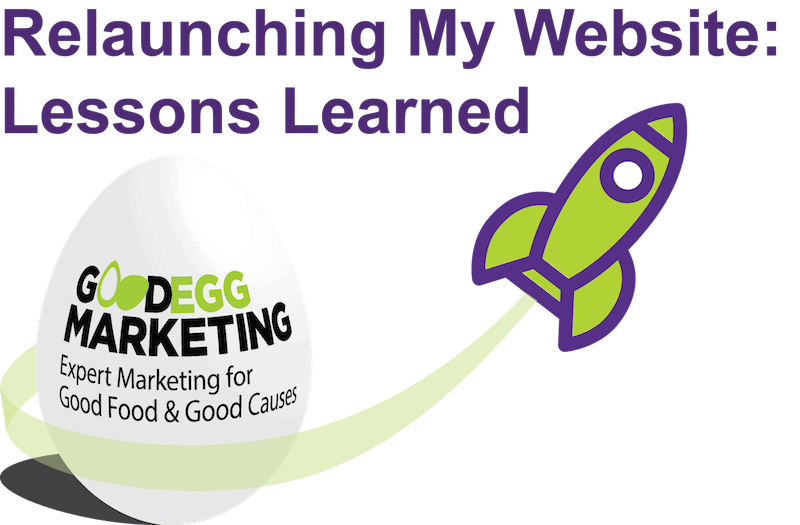
Good Egg Marketing specializes in building websites, so when I wanted to create a new site for our own business, I figured it’d be a snap.
If I’d just wanted to give the site a facelift, but keep the same content, it would have been simple. But I was determined to create an easy-to-navigate site with lots of useful stuff and a fun, distinctive look.
Admittedly, I was busy running my business, so I wasn’t working on the site all the time. But all in all, it took over two years to complete!
Whether you’re starting a new website from scratch or building a new one, here are a few tips on how to create or relaunch a site, based on my lessons learned.
Start with Your Goals
I was really clear about what I wanted the new site to achieve and that helped me stay true to my vision throughout the process. Here are my three goals:
- Drive traffic to the site by providing useful content that people find on Google and other search engines.
 Over the years, I’ve written dozen of articles on a variety of business and marketing topics, but I never paid much attention to search engine optimization (SEO). This time, I used Yoast SEO to help ensure that each article focused on a specific topic and keyword.
Over the years, I’ve written dozen of articles on a variety of business and marketing topics, but I never paid much attention to search engine optimization (SEO). This time, I used Yoast SEO to help ensure that each article focused on a specific topic and keyword.
- Encourage people to spend time exploring the website by making it easy to navigate. The content on my old site was
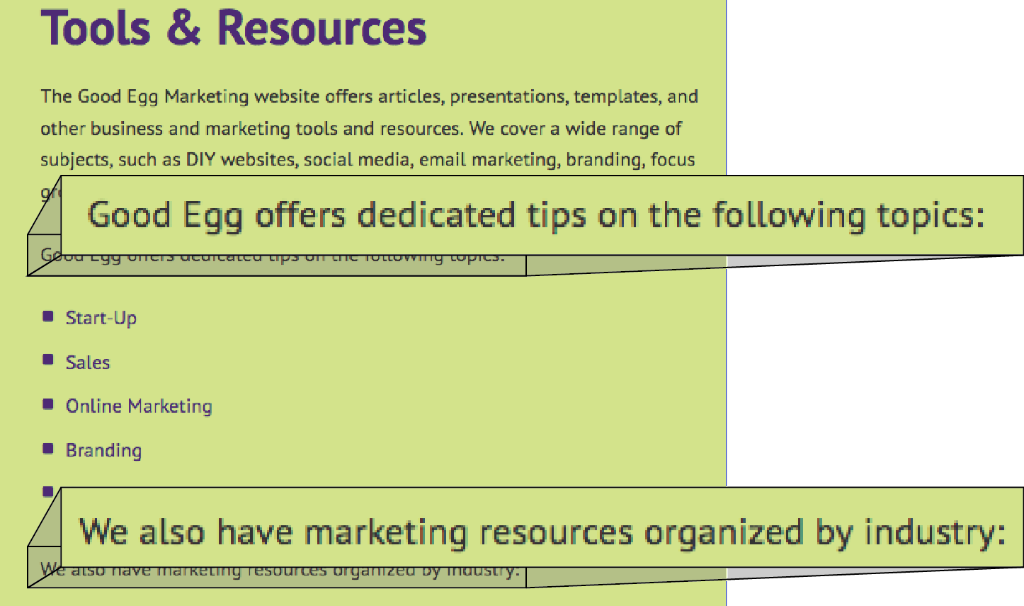 grouped by date and format—articles, newsletters, and presentations—rather than by topic. The site organization made sense to me—and no one else. The new site organizes content by topic and by audience, so visitors can find what they need faster.
grouped by date and format—articles, newsletters, and presentations—rather than by topic. The site organization made sense to me—and no one else. The new site organizes content by topic and by audience, so visitors can find what they need faster.
- Encourage people to hire us by showcasing our past work. When most people visit the Good Egg Marketing site, they’re already interested in us, but need to be convinced that we can help them. I included testimonials, case studies, and a list of our speaking engagements
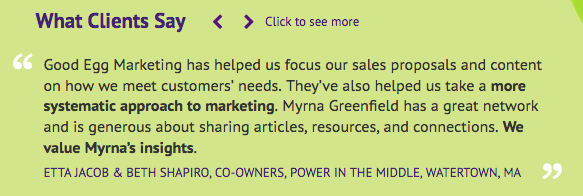 and clients. The content showcases our expertise; our client roster demonstrates that people have confidence in our work.
and clients. The content showcases our expertise; our client roster demonstrates that people have confidence in our work.
As I look at the analytics to see how people are using the site each month, I’ll be able to tweak it to achieve my goals.
Focus on Your Customers
As a marketer, I’m always telling clients to put themselves in their customers’ shoes and address their needs.
The websites for many marketing company websites lead with who they are, what they do, and how they do it. All important stuff to include, 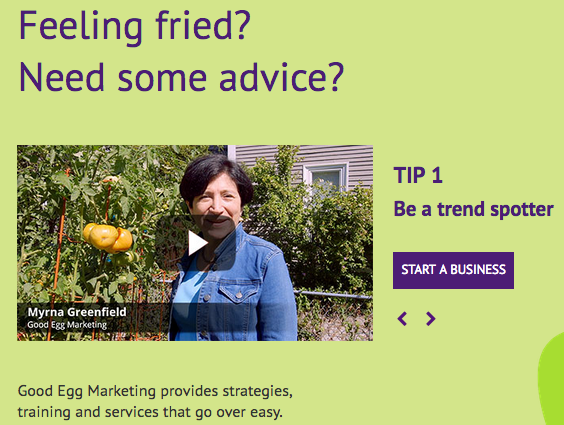 but not at the top of your home page.
but not at the top of your home page.
Our new site directly addresses frazzled business owners who feel overwhelmed by all their marketing choices. A series of rotating marketing tips complements a short video that expands on that advice in a friendly, informal style.
Get the Visuals Right
The biggest challenge for the redesign was coming up with a distinctive look. Since marketing services are intangible, it’s hard to find an image that expresses what marketing is. I didn’t want to be yet another site featuring a photo of a flower or a mountain.
After playing with a variety of concepts, including a recreation of my desktop strewn with tools of the marketing trade, I was at my wit’s end.
 I finally went to a graphic designer I’d worked with many years ago and started with a clean slate. She interviewed me about my vision and ideas for over an hour. Ultimately, she came up with a dramatic, abstracted version of the Good Egg Marketing logo–a green egg!–that sets the tone for the site through shapes and colors.
I finally went to a graphic designer I’d worked with many years ago and started with a clean slate. She interviewed me about my vision and ideas for over an hour. Ultimately, she came up with a dramatic, abstracted version of the Good Egg Marketing logo–a green egg!–that sets the tone for the site through shapes and colors.
Once she created the basic look for the home page, I was able to write headlines and text that complemented those images and she created additional pages that built on the same format. My web developer was able to turn her images into a flexible WordPress design and everything else fell into place.
Bake Mobile into Your Site from the Start
I knew all along that my website needed to look good, load quickly, and be easy to use on a mobile device. These days, Google and other search engines penalize you if your site isn’t mobile-friendly. Unfortunately, I didn’t put enough thought into how the images would work on mobile when we developed the site. 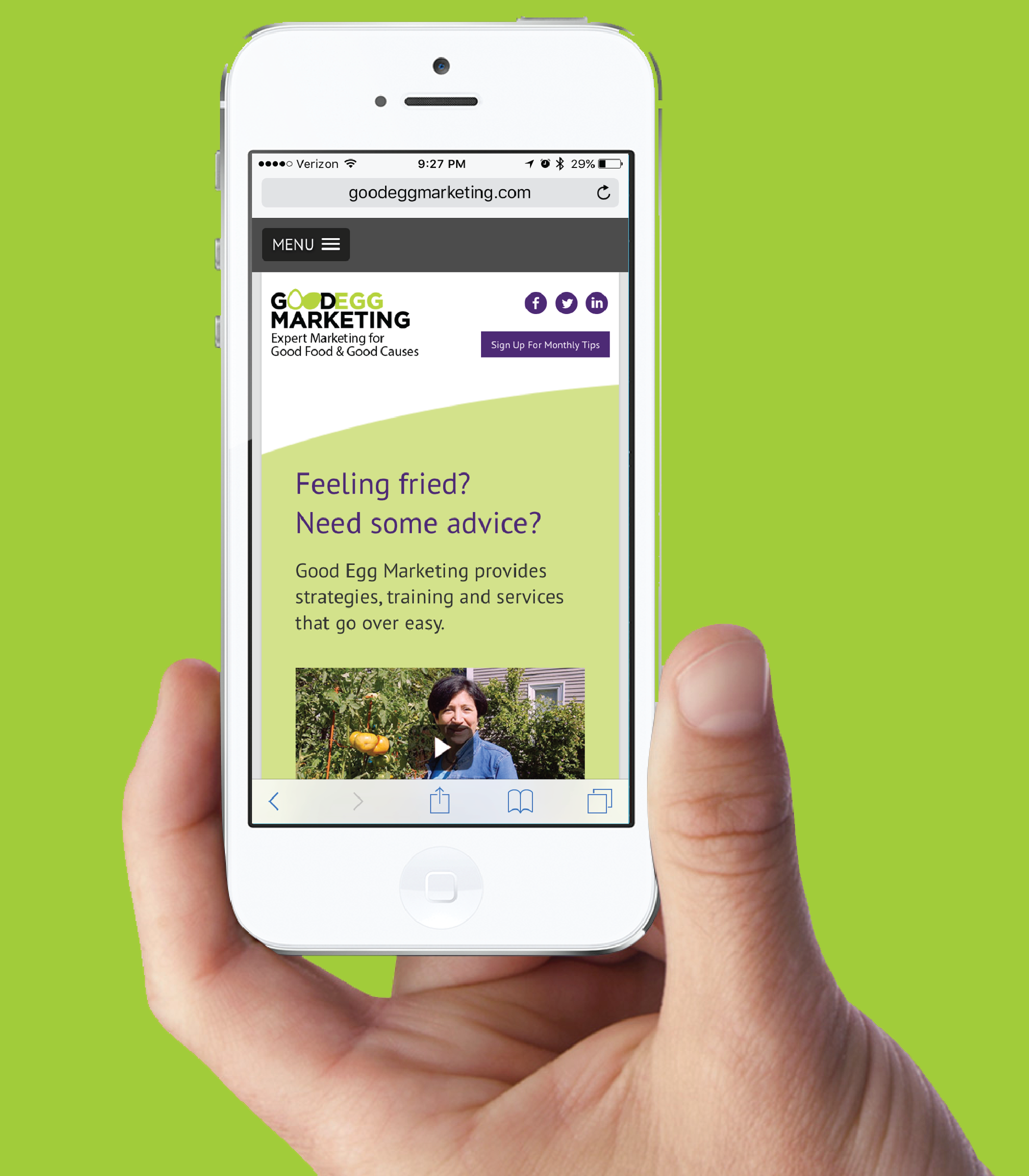
We created the desktop site first, meticulously tweaking it to get it to look just right. But when we looked at the site on a cell phone, many of the graphics didn’t line up correctly. We were using a mobile responsive design, but the graphics needed extra tweaking. Ultimately, we were able to create an acceptable mobile version, but it required additional time and expense.
If you look at the analytics for your current site, you can see what proportion of your visitors are viewing your site on a desktop versus a mobile device. Even if you don’t have a lot of mobile visitors now, mobile will eventually take over, so you should bake mobile design into your site from the start.
It Takes a Team
 Just need a simple site with basic information about who you are, what you offer, and why you’re in business? If you have good computer skills and the time, you can probably create a website singlehandedly. There are plenty of free or inexpensive website builder programs that let you DIY (do it yourself) pretty easily. If you want to create a unique looking site or organize lots of content, however, don’t try this on your own!
Just need a simple site with basic information about who you are, what you offer, and why you’re in business? If you have good computer skills and the time, you can probably create a website singlehandedly. There are plenty of free or inexpensive website builder programs that let you DIY (do it yourself) pretty easily. If you want to create a unique looking site or organize lots of content, however, don’t try this on your own!
I managed the project and wrote the copy, but over the two years, I worked with two graphic designers, three assistants, a web developer/videographer, and a search optimization expert. Instead of bringing these talented people together as a team, I worked with them individually and sequentially. It seemed more efficient at the time, but in retrospect, putting a team together from the start would have saved time and money in the long run.
If I were starting over again, I would also decide which project management, storage, and communications tools I wanted the team to use. We shared and stored some of our work on Google Drive and Dropbox, but we didn’t use them as consistently or effectively as we could have. In the future, I plan to use Trello and Dropbox for my personal projects, as well as with clients.
Final Thoughts
A good website isn’t static, like a printed brochure. It’s a living thing that you need to keep feeding and buying new clothes.
If you have a well-planned site, you should be able to adjust it as needed without needing a full redesign every six months. But, like fashion, web technology and design move so quickly that it’s inevitable that I’ll crave a new look eventually. When it comes time to build the new site, I plan to reread this article and take my own advice.
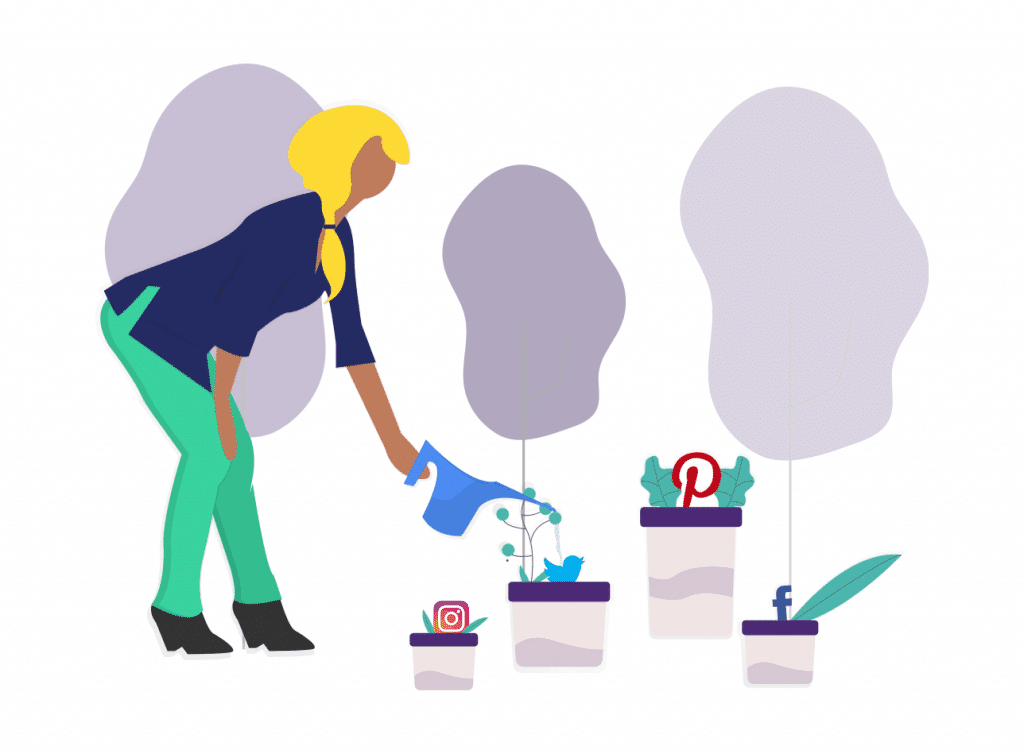

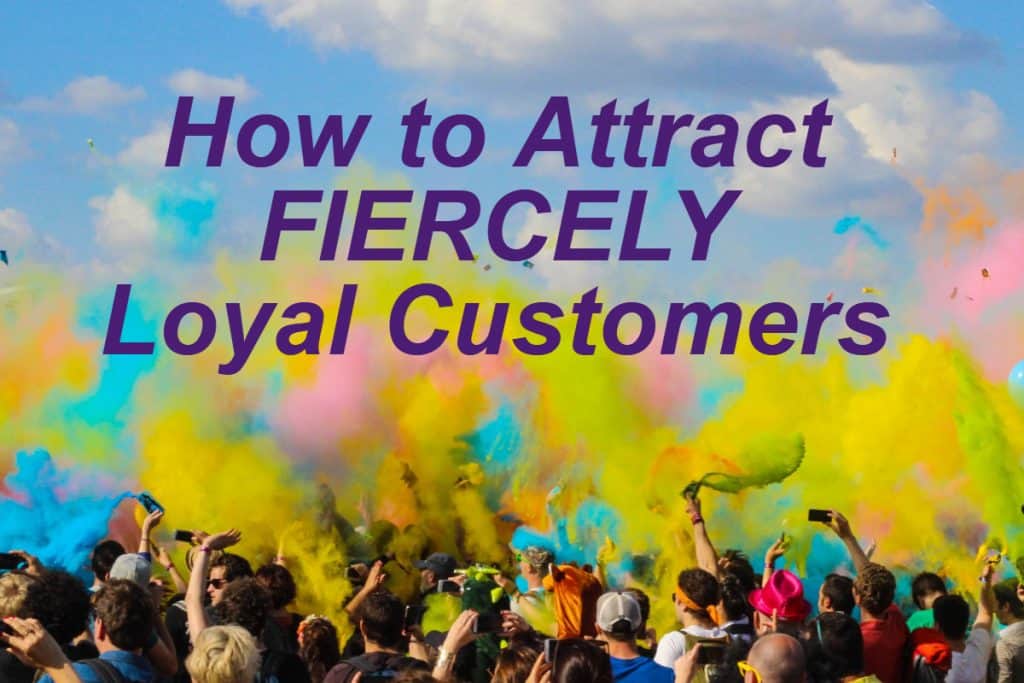


 Facebook’s in hot water because they violated their own privacy policy. Don’t assume that just because you’re small–and you’re not doing anything “wrong”—that you don’t have to pay attention to privacy issues.
Facebook’s in hot water because they violated their own privacy policy. Don’t assume that just because you’re small–and you’re not doing anything “wrong”—that you don’t have to pay attention to privacy issues.
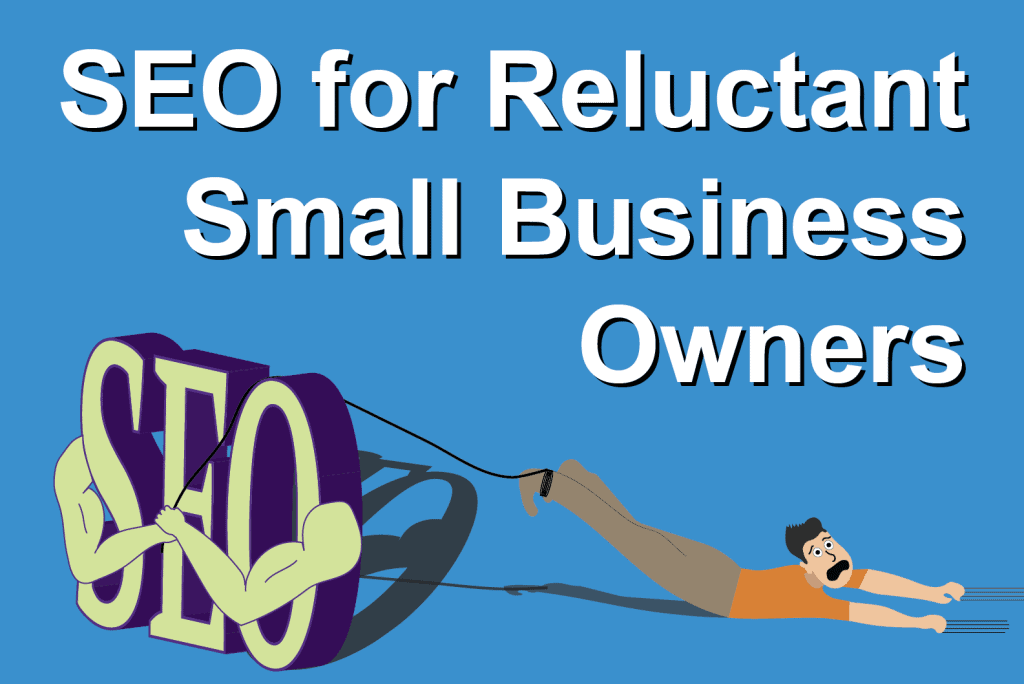

 Over the years, I’ve written dozen of articles on a variety of business and marketing topics, but I never paid much attention to search engine optimization (SEO). This time, I used Yoast SEO to help ensure that each article focused on a specific topic and keyword.
Over the years, I’ve written dozen of articles on a variety of business and marketing topics, but I never paid much attention to search engine optimization (SEO). This time, I used Yoast SEO to help ensure that each article focused on a specific topic and keyword. grouped by date and format—articles, newsletters, and presentations—rather than by topic. The site organization made sense to me—and no one else. The new site organizes content by topic and by audience, so visitors can find what they need faster.
grouped by date and format—articles, newsletters, and presentations—rather than by topic. The site organization made sense to me—and no one else. The new site organizes content by topic and by audience, so visitors can find what they need faster. and clients. The content showcases our expertise; our client roster demonstrates that people have confidence in our work.
and clients. The content showcases our expertise; our client roster demonstrates that people have confidence in our work. but not at the top of your home page.
but not at the top of your home page. I finally went to a graphic designer I’d worked with many years ago and started with a clean slate. She interviewed me about my vision and ideas for over an hour. Ultimately, she came up with a dramatic, abstracted version of the Good Egg Marketing logo–a green egg!–that sets the tone for the site through shapes and colors.
I finally went to a graphic designer I’d worked with many years ago and started with a clean slate. She interviewed me about my vision and ideas for over an hour. Ultimately, she came up with a dramatic, abstracted version of the Good Egg Marketing logo–a green egg!–that sets the tone for the site through shapes and colors.
 Just need a simple site with basic information about who you are, what you offer, and why you’re in business? If you have good computer skills and the time, you can probably create a website singlehandedly. There are plenty of free or inexpensive website builder programs that let you DIY (do it yourself) pretty easily. If you want to create a unique looking site or organize lots of content, however, don’t try this on your own!
Just need a simple site with basic information about who you are, what you offer, and why you’re in business? If you have good computer skills and the time, you can probably create a website singlehandedly. There are plenty of free or inexpensive website builder programs that let you DIY (do it yourself) pretty easily. If you want to create a unique looking site or organize lots of content, however, don’t try this on your own!
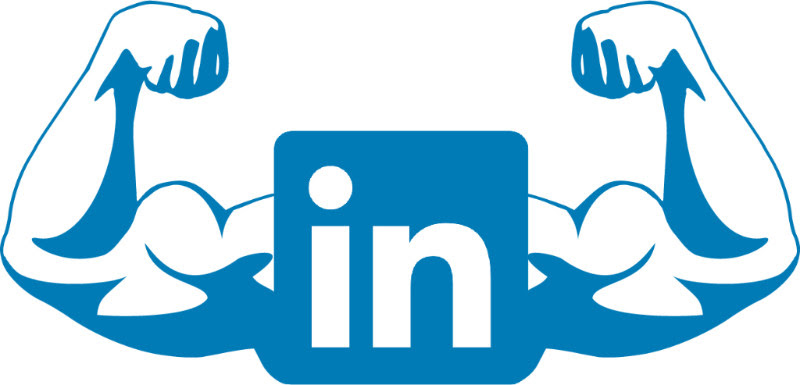
 Email is still the most trusted, popular and effective marketing tool available: that’s why our inboxes are stuffed with it. So what’s a good open rate for your marketing emails? Overall, average open rates hover around 21%, but open rates range from 11-27%, depending on the industry,
Email is still the most trusted, popular and effective marketing tool available: that’s why our inboxes are stuffed with it. So what’s a good open rate for your marketing emails? Overall, average open rates hover around 21%, but open rates range from 11-27%, depending on the industry, 

